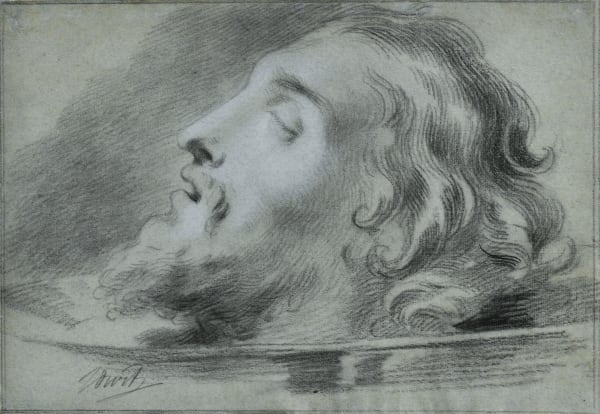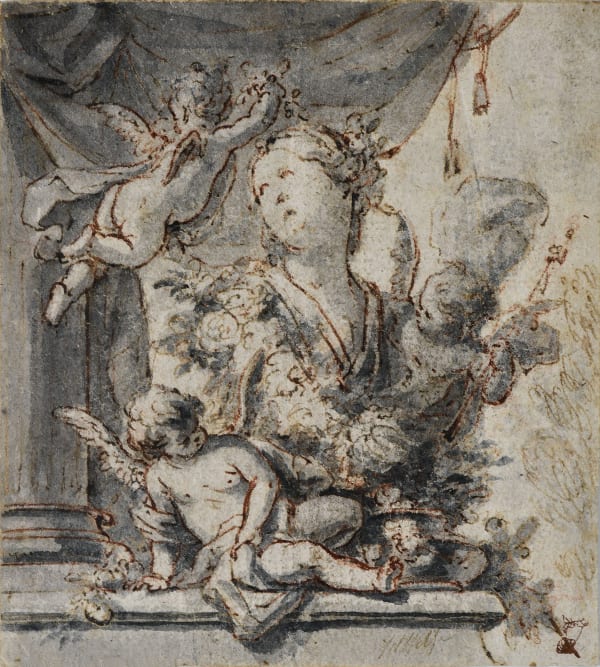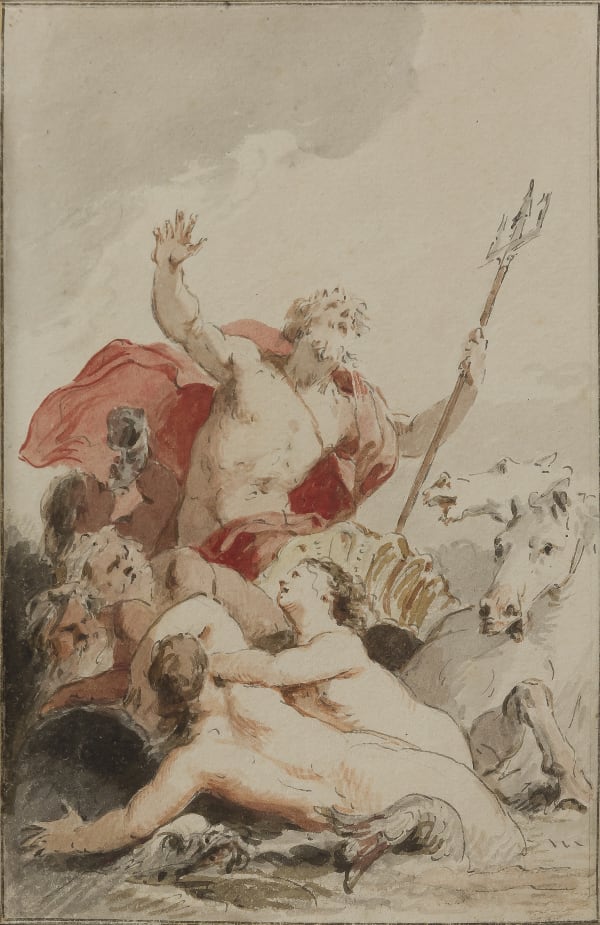Jacob de Wit (Amsterdam 1695 - 1754)
Jacob de Wit was born in Amsterdam in 1695. He received his first training, with the painter Albert Spiers, at the early age of nine. When he was thirteen, he went to Antwerp to study at the Academy. He became a pupil of Jacob van Hal, and went on to become a member of the guild of St Luke in 1714. While in Antwerp, he also produced a series of watercolour sketches of the ceilings decorated by Rubens in the Jesuit St Carolus Borromeus Church. As the church was struck by lightning a few years later and the ceilings were lost in the fire, these works, which were later engraved, became important historical documents. The work and style of Rubens – especially his cycle for the Borromeus church – were to leave a lasting impression on de Wit.
In 1715, de Wit returned to Amsterdam, where he became a much sought after artist for his decorative paintings on walls, doors and ceilings. Wealthy patrons who lived on the grachten in Amsterdam commissioned decorations from him. As many of them also had country houses, de Wit did a lot of work in neighbouring Haarlem and Vecht as well. De Wit was a great illusionistic painter who often worked in grisaille.
De Wit produced a great number of sketches and drawings for his projects; many are kept in major institutional collections today. The present very early work – most probably done when the artist was still in Antwerp – is a study for a decorative wall panel, possibly as part of a series of the four seasons. Unfortunately, it has not yet proved possible to link the present drawing to a finished work or a commission. Nevertheless, it is a beautifully executed and very typical work by de Wit and a fine addition to his oeuvre.
Provenance
Private collection, Paris.
- X
- Tumblr
-
 Jacob de Wit (Amsterdam 1695 - 1754), The Head of St John the Baptist
Jacob de Wit (Amsterdam 1695 - 1754), The Head of St John the Baptist -
 Jacob de Wit (Amsterdam 1695 - 1754), Mucius Scaevola before Porsenna
Jacob de Wit (Amsterdam 1695 - 1754), Mucius Scaevola before Porsenna -
 Jacob de Wit (Amsterdam 1695 - 1754), A Preparatory Drawing for 'Liefde Triompheert'
Jacob de Wit (Amsterdam 1695 - 1754), A Preparatory Drawing for 'Liefde Triompheert' -
 Jacob de Wit (Amsterdam 1695 - 1754), Neptune; Ceres, Cybele and Abundance (2)
Jacob de Wit (Amsterdam 1695 - 1754), Neptune; Ceres, Cybele and Abundance (2)




